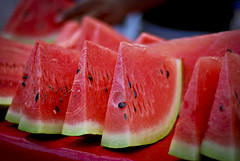Fresh, ripe fruit plays an important part in any healthy diet, but it can be frustrating when your juicy apples get brown and bruised just days after purchasing them. If you'd like to select the ripest, freshest produce at the grocery store, check out these four tips!
- Feel the weight. Fruits like melons, oranges, and lemons feel heavier when they’re ripe with juice, so pick them up before choosing which ones to buy. The fruit should feel heavy for its size if it’s truly ripe.
- Test the texture. The above fruit should also feel firm to the touch, but not so firm that they feel dry and hard inside. Give them a gentle squeeze to check for bruising, as well.
- Use your sense of smell. Fruits like berries, grapes, and nectarines begin to smell sour or rotten when they’re past their prime, so be sure to give them a good whiff before purchasing. Most fruits will give off a light, sweet scent when they’re ready to consume.
- Inspect the whole surface. If all else fails, use your best judgment by simply inspecting the fruit. Turn over a melon or apple to check for bruising or discoloration, take a quick peek through a bag of grapes or oranges to see if any are mushy or rotten, and consider the color of the fruit’s skin, as this can often tell if it is too ripe.
How to Select Fresh, Ripe Produce [Lifehacker]
How to Pick Fruits & Veggies [Good Housekeeping]
Raw Produce: Selecting and Serving it Safely [FDA]
Choosing Fresh Fruits and Vegetables [Family Circle]

 Equal Housing Opportunity
Equal Housing Opportunity